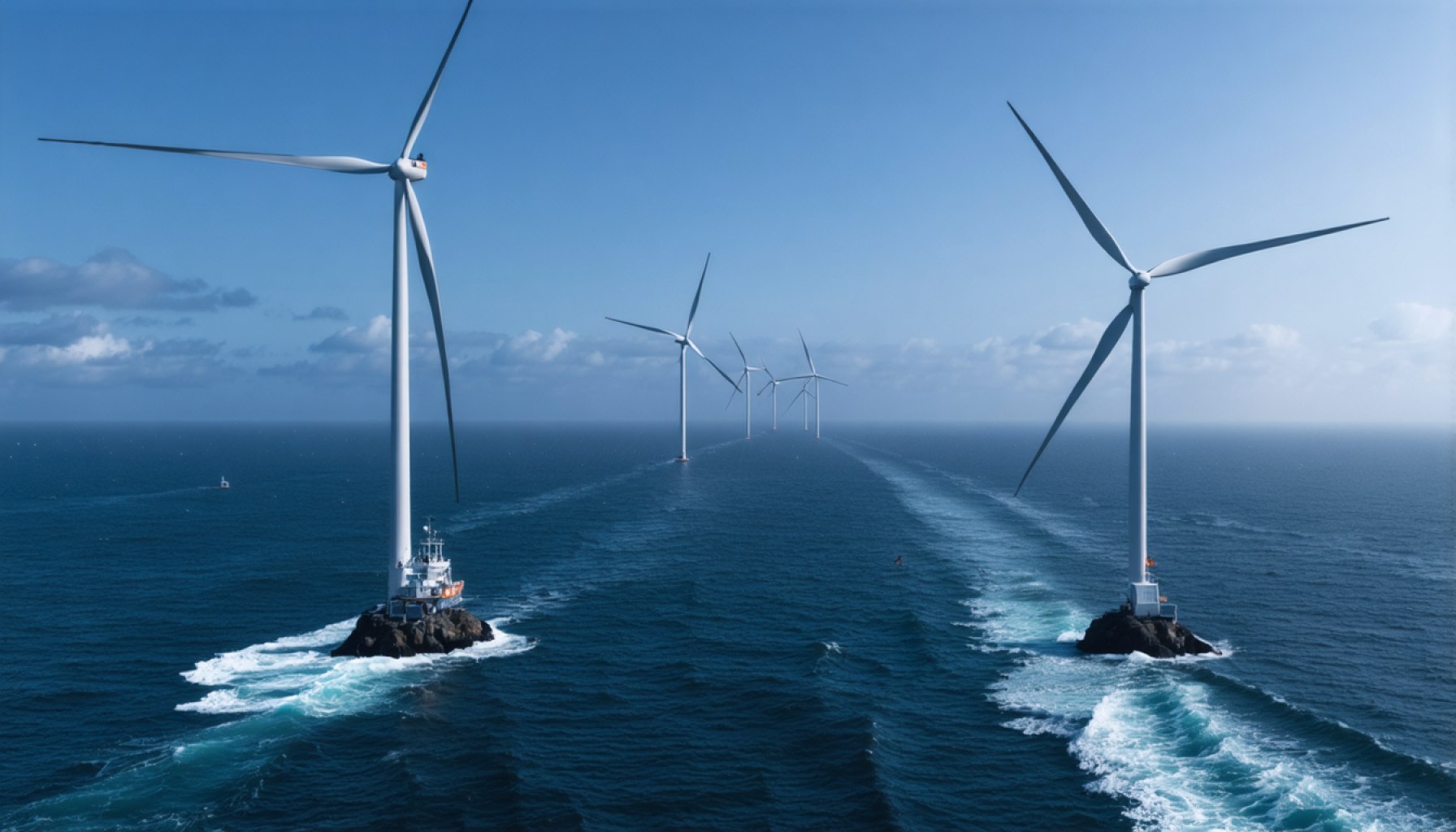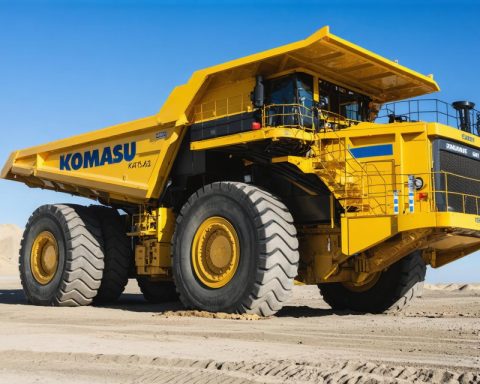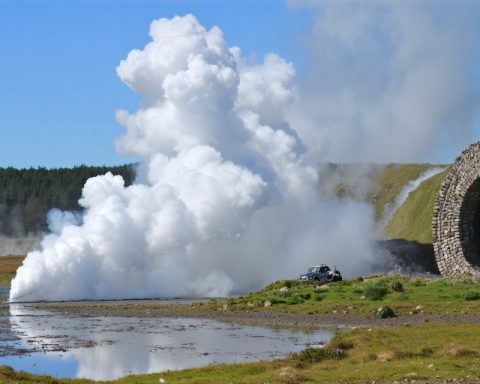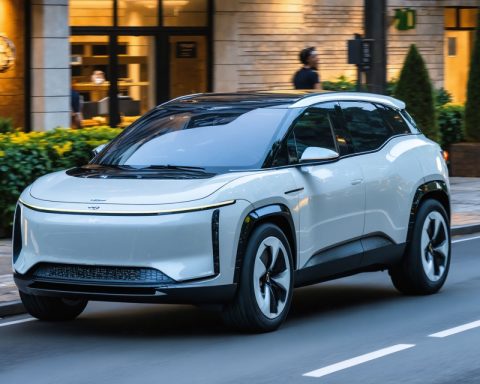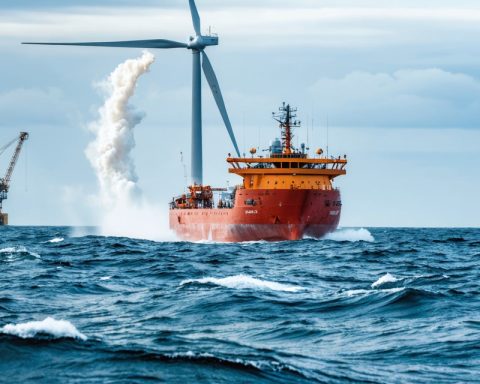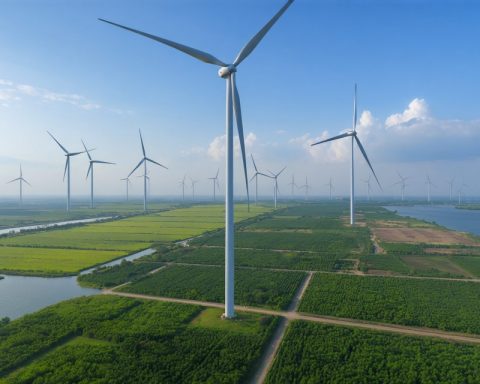- Equinor is advancing a major offshore wind project near Long Beach, featuring 54 wind turbines and an offshore substation.
- Nordnes, a specialized vessel, carefully constructs a rock foundation to stabilize turbines against erosion.
- The shift from concrete to monopile foundations, using steel cylinders driven into the seafloor, prioritizes cost-effectiveness.
- Concerns arise from the Long Island Commercial Fishing Association about the ‘rock armor’ potentially impacting fishing operations.
- Environmental groups express unease over seabed disturbances, advocating for ecologically sensitive construction methods.
- The project underscores the delicate balance required between technological progress and environmental stewardship.
Off the sunlit coast of Long Beach, a monumental endeavor is unfolding as Norway-based Equinor embarks on its latest chapter towards a sustainable future. The stage is set with an ambitious blueprint: 54 towering wind turbines and an offshore substation destined to redefine the horizons of renewable energy. Yet, beneath the waves, a rocky narrative is taking shape—one that sparks both engineering marvel and environmental controversy.
This October, the oceanic stage is graced by Nordnes, Equinor’s industrious vessel, which begins the intricate ballet of layering stones upon the seabed. Each rock meticulously placed within a 66-foot radius around the turbines intends to forge a stalwart base, safeguarding the structure against the relentless dance of erosion. Immaculately calculated, this foundation promises stability for turbines that will rise nearly a thousand feet above the ocean, harnessing the whisper of the wind fifteen miles from the shore.
However, beneath the surface of innovation lies a discordant note. The Long Island Commercial Fishing Association, led by the vigilant Bonnie Brady, raises a voice for mariners whose nets glide across ocean floors. The concern? Vast expanses of ‘rock armor’ that threaten to entangle and possibly capsize the vessels, impacting livelihoods that have long relied on the ocean’s bounty.
Driven by a commitment to cost-effectiveness, Equinor’s pivot from concrete foundations to monopiles has not gone unnoticed. Initially envisioned on colossal bases crafted near Albany and shipped downriver, the revised design now employs long steel cylinders hammered directly into the seafloor. Each of these pillars, some 197 feet in length, withstands the pounding waves through sheer brute force—achieving anchorage amidst the currents after thousands of resounding hammer blows.
Yet, the beating heart of Equinor’s project faces a tempestuous dialogue with environmental advocates. Organizations that once applauded Equinor’s endeavors now stand divided. The Natural Resources Defense Council and The Nature Conservancy have voiced trepidation, urging the return to gentler foundations that once promised minimized marine disturbance. The gravitas of their concerns emphasizes a singular truth: any oversight could jeopardize fragile ecosystems where whales sing and breach near year-round.
This unfolding story of ambition and the unforeseen critiques casts a spotlight on a crucial takeaway. Progress, in its quest to redefine energy landscapes, must navigate with precision and consciousness. As Equinor charts a future powered by the wind, the endeavor remains a testament to humanity’s pursuit of balance—progress that strides forward while honoring the silent symphony of nature.
Offshore Wind: Triumph or Trouble? Unveiling the Complexities of Equinor’s Ambitious Renewable Energy Project
Overview of Equinor’s Offshore Wind Project
Off the coast of Long Beach, Equinor, a leading Norwegian energy company, is spearheading a significant offshore wind project. With 54 towering wind turbines and an offshore substation in the works, the project aims to revolutionize renewable energy generation. These structures, set approximately 15 miles off the shoreline, will harness the power of the wind, contributing substantially to sustainable energy goals. The base of each turbine relies on carefully laid rock foundations within a 66-foot radius, designed to provide stability against erosion and high waves.
Engineering Marvels & Environmental Concerns
Equinor’s shift from massive concrete foundations to monopiles—long steel cylinders driven into the seabed—marks a key engineering evolution. These 197-foot-long monopiles, driven into the seafloor with thousands of hammer blows, present a more cost-effective solution. However, the project hasn’t been without disagreements, particularly concerning marine and environmental impacts.
Environmental Concerns:
– Marine Life Impact: Environmental groups like The Natural Resources Defense Council and The Nature Conservancy stress concerns over potential disturbances to marine ecosystems where marine life such as whales thrive.
– Fishing Industry: The Long Island Commercial Fishing Association warns about the ‘rock armor’ potentially becoming hazardous to fishing vessels, potentially damaging nets and equipment.
Pros & Cons of Offshore Wind Projects
Pros:
– Sustainability: Offshore wind farms provide a renewable source of energy with zero emissions, aiding in the reduction of carbon footprint.
– Energy Output: Offshore locations usually offer stronger and more consistent winds, leading to higher energy yields.
– Job Creation: Projects like this create numerous jobs in engineering, construction, and ongoing maintenance.
Cons:
– High Initial Costs: Offshore projects require significant upfront investment.
– Environmental Impacts: Potentially negative effects on marine habitats and biodiversity.
– Visual and Navigational Impacts: Concerns about visual pollution and possible interference with shipping routes.
Industry Trends and Future Predictions
The global offshore wind industry is poised for significant growth, expected to reach a compounded annual growth rate (CAGR) of over 15% by 2030. The U.S., in particular, is becoming a hotspot for offshore wind development due to various federal incentives and state commitments to renewable energy targets.
Real-World Use Cases and Benefits
– Reduced Carbon Emissions: Offshore wind farms can substantially lower reliance on fossil fuels, contributing to greener energy portfolios.
– Utility Scale Energy: Capable of powering thousands of homes, these projects help stabilize energy costs and provide consistent power sources, especially during peak demand times.
Actionable Recommendations
1. Stakeholder Engagement: Equinor and similar companies should engage in continuous dialogue with both environmental organizations and local communities to address concerns and work collaboratively toward solutions.
2. Technology Adaptation: Investing in research to develop technologies that mitigate environmental impacts, such as quieter pile-driving techniques or dynamic management systems to protect marine species.
3. Regulatory Oversight and Policies: Strong regulatory frameworks can ensure environmentally responsible development and operation, balancing growth with ecological protection.
Conclusion
Equinor’s offshore wind project reflects the intricate balance between pioneering sustainable energy solutions and preserving the ecological harmony of marine environments. Progress in renewable energy must harmoniously coexist with nature, ensuring continued support for the communities and ecosystems involved. For more on innovations in renewable energy, visit Equinor.
